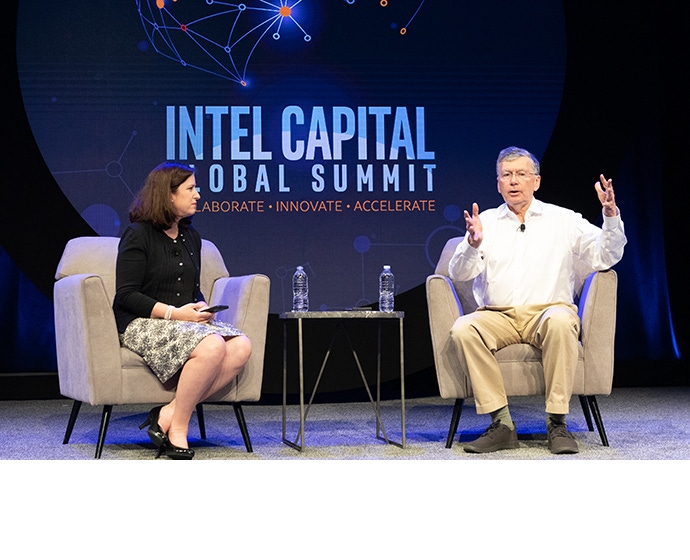Intel has seemingly learned a lesson from the woes of stumbling giants, announcing it has invested $117 million in ‘disruptive’ start-ups at its annual VC conference.
April 2, 2019

Intel has seemingly learned a lesson from the woes of stumbling giants, announcing it has invested $117 million in ‘disruptive’ start-ups at its annual VC conference.
There is a very good reason investors are so keen to pump cash into the likes of Google and Amazon, despite recent criticism and the threat of regulatory reform; these are companies which never sit still. The likes of Jeff Bezos and Sundar Pichai are constantly pushing the boundaries, expanding the business into new segments. It should be viewed as a lesson for every CEO around the world.
However, this is seemingly a lesson which has only recently been added to the management curriculum. In generations gone, some of the worlds’ leading technology companies have climbed further than any other before, and then stopped exploring. IBM, Oracle and Microsoft are three examples of companies which sat still for years, and the industry moved on without them. They have since recovered, but it took a lot to bridge the chasm.
“Intel Capital is continuing that legacy of disruption with these investments,” said Wendell Brooks, President of the VC arm, Intel Capital.
“These companies are shifting the way we think about artificial intelligence, communications, manufacturing and health care – areas that will become increasingly essential in coming years as the linchpins of a smarter, more connected society.”
One of the oldest phrases in the technology industry is often forgotten, but it seems Intel is attempting to resurrect it; disrupt or be disrupted.
Google and Amazon are the perfect embodiment of this statement. If you look at the acquisitions made over the years, they are incredibly intelligent bets. Google bought YouTube, Android and DeepMind for huge sums at the time, but now they look like bargains. Amazon didn’t make a profit for years, instead re-investing and now has AWS as a profit machine. These companies could have collected profits, paid more dividends and rewarded management with more bonus’, but look at what the end result is.
As it stands, Intel is in a relatively healthy position. Looking at the financials for 2018, revenue was $17.1 billion for the fourth quarter and $62.8 billion for the 12 months. These figures are 8% and 9% up year-on-year respectively, with data-centric revenue up 21% compared to Q4 in 2016. Share price declined on the news, investors were concerned over a conservative forecast, but the warning shot has seemingly been heeded.
If growth is not satisfying investors, something needs to change. The status quo is unlikely to reap more rewards tomorrow than today, therefore investment is required. Some of this will be directed inwards, though through the investments in Intel Capital the firm is welcoming disruption; it wants to be in on the ground floor of these potential booming enterprises.
“Our continued goal is to leverage the global resources and expertise of the world’s greatest engineering company, and its ecosystem of customers and partners, to help these founders accelerate growth and innovation,” said Brooks.
Looking at the investments, AI features heavily. Cloudpick is a smart retail technology provider with proprietary computer vision, deep learning, sensor fusion and edge computing technologies to enable cashier-free stores. SambaNova Systems is building an advanced systems platform to run AI applications. Zhuhai EEasy Technology is an AI system-on-chip (SoC) design house and total solution provider.
The team is also investing in the edge computing hype with Pixeom, mobile content streaming with Polystream, digital healthcare with Medical Informatics and Reveal Biosciences and also smart manufacturing.
The lessons of sitting still are incredibly obvious. Oracle founder CEO Larry Ellison dismissed the cloud and look where that has landed the firm. IBM refused to respond to the evolving PC market and it resulted in a colossal overhaul. Microsoft was another which ignored market trends, with former CEO Steve Balmer making some very off-target predictions in 2006. All of these companies have learned a lesson on disruption, but it came at a cost which took years to fix.
With its VC arm, Intel is promising to invest $300 to $500 million a year in disruptive technologies. It is taking a page out of the Amazon and Google playbook; if you want to remain on top, you can never sit still.
About the Author(s)
You May Also Like








.png?width=300&auto=webp&quality=80&disable=upscale)


_1.jpg?width=300&auto=webp&quality=80&disable=upscale)


.png?width=800&auto=webp&quality=80&disable=upscale)